How to Master Facebook Audience Insights | A Complete Guide
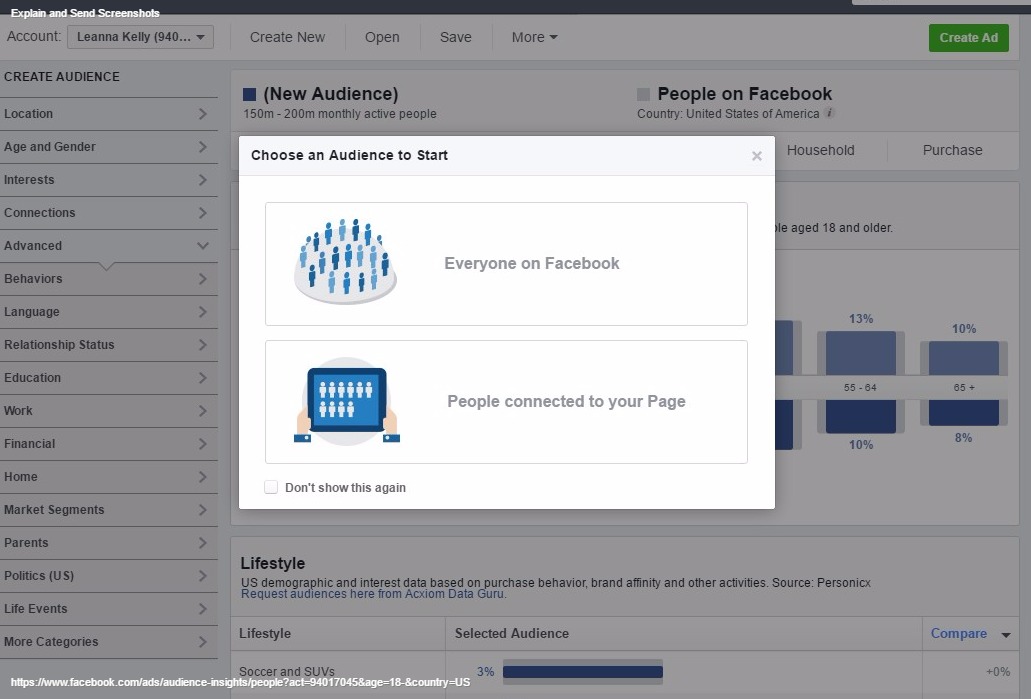

Are you busy trying to maximize your ad spend on facebook? Or maybe, you’re trying to dig up more data as to who your audience is. Either way, having a good idea of what Facebook Audience Insights is and how you can master Facebook Audience Insights will be essential to skyrocket your ROAS on Facebook advertising.
While most advertisers know who their fans are, we’re here to give you everything you need to know about Facebook Audience Insights so you can have an even stronger campaign. Knowing what your audience’s interests are and having greater insights than your competitors can help you double your Facebook campaign results.
Facebook Audience Insights is a tool within ads manager to help marketers do a number of powerful things for your ads. For one, it can help you develop your overall Facebook marketing strategy by providing data to strengthen competitive research, and the direction of content creation. More often than not, advertisers mainly use this tool to tighten their ad targeting and decrease advertising spend per conversion.
Facebook Page Insights differ from Facebook Audience Insights in a big way: Facebook Page Insights is solely for measuring interactions on your page (likes, etc.), while Facebook Audience Insights covers trends for current or potential customers across Facebook to help you target smarter.
With Facebook Audience Insights, you’ll get to delve into your ideal customers’:
We’ll go deeper into how to select segment parameters for each of these categories further down. Once you’ve nailed down your ideal customers, you can create custom audiences from the data and create ads with your new insight.
Wondering how Facebook gathers this much data from their audience? The two main sources are Third Party and Facebook native data. All of Facebook’s third-party data comes from sources like Acxiom, Epsilon, and Datalogix. All of their native data comes directly from the Facebook platform—what users choose to share on their profiles, what groups they join, etc.
If you’re looking for more general information and studies compiled by Facebook using this data, check out the Facebook IQ platform.
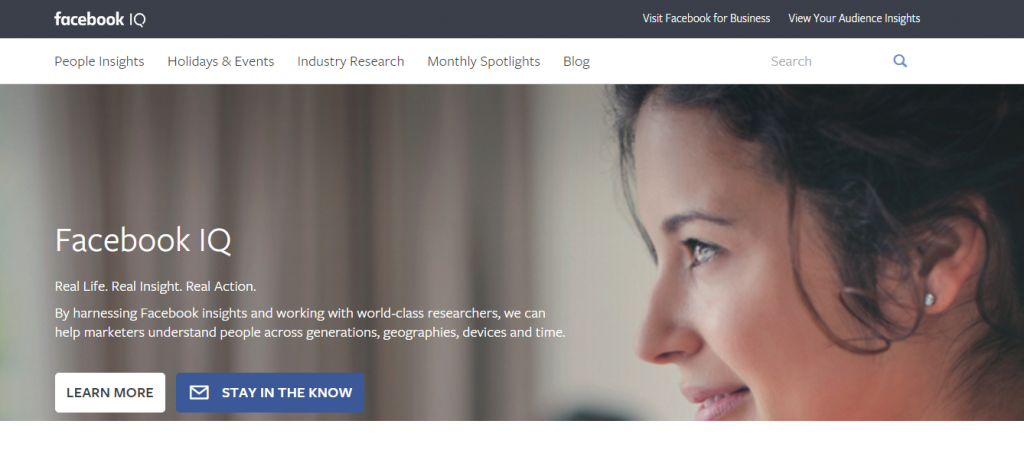
Pro tip: Click that “Stay in the Know” button to keep up on Facebook’s new research and platform updates.
In order to use the Facebook Audience Insights, you must be a Page Advertiser, and you’ll need an account on Facebook. You can go to Facebook Ads manager and click on Audience Insights in the left-hand menu or log into Audience Insights.
Once you have logged in, select what audience you’d like to see: everyone on Facebook or just people connected to your page:
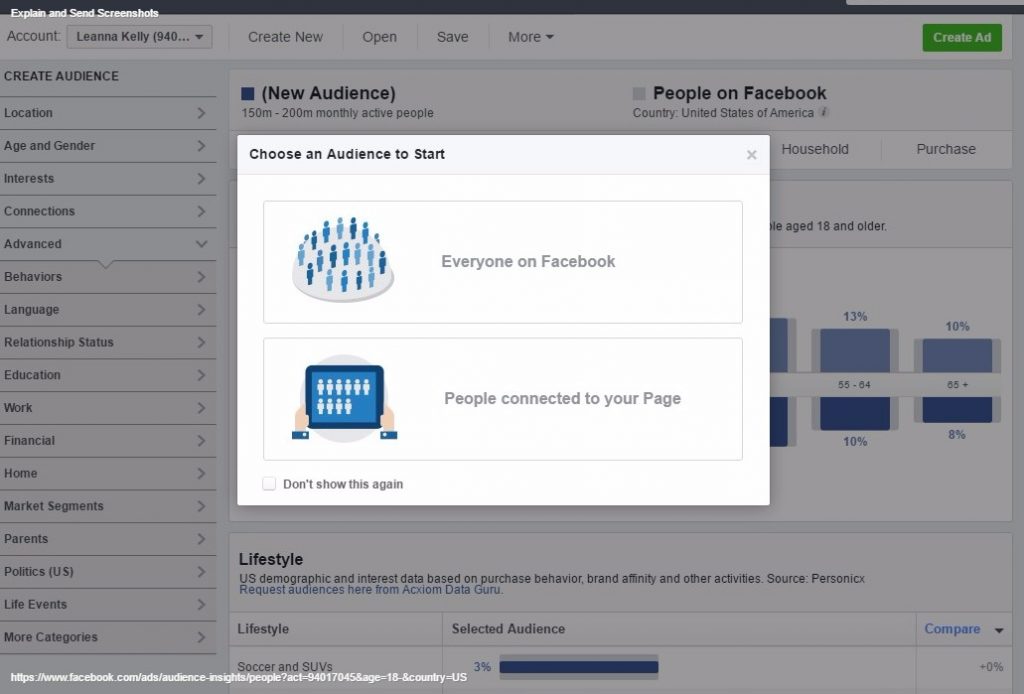
How do you know whether to choose Everyone on Facebook or People Connected to Your Page? As a rule of thumb, when you are trying to understand only your existing audience you would select People Connected to Your Page. If you’d like to understand broader interests related to your customers or you’d like to pull useful insights from your competitors Pages, select Everyone on Facebook.
You can use Facebook Audience insights to create new targeted audiences or manually create lookalike audiences. However, if you’re hoping to examine data from your current Custom Audiences, Facebook requires that you have at least “1,000 monthly-active people” in your Custom Audience to view it in Audience Insights. To learn more about creating Custom Audiences, check out our Retailer’s “Must Have Facebook Custom Audiences Cheat Sheet”.
If you’ve selected Everyone on Facebook, you’ll see an entire dashboard with the option to create a New Audience to target. Within this dashboard, select the characteristics that represent your audience. On the left side, you’ll see many options for targeting, from basics like “location” to advanced filters such as “income”, “politics”, or even “life events”.
Let’s start off at the top: location. Automatically, Facebook sets the location of your audience to be in the U.S. You can further specify location by state, city or even a different country. There are many best practices for targeting Facebook ads worldwide, but remember that your ad set is most likely to perform at it’s best when it’s being displayed to the people most likely to be interested in it. Use your location options wisely. Facebook will give you the top cities, countries, and languages your audience has been performing in. To view by volume, click “Selected Audience.” If you have already narrowed down your location to be in one country (e.g. the United States), top performing cities listed will be only within that respective country (e.g. San Diego, New York, Miami).
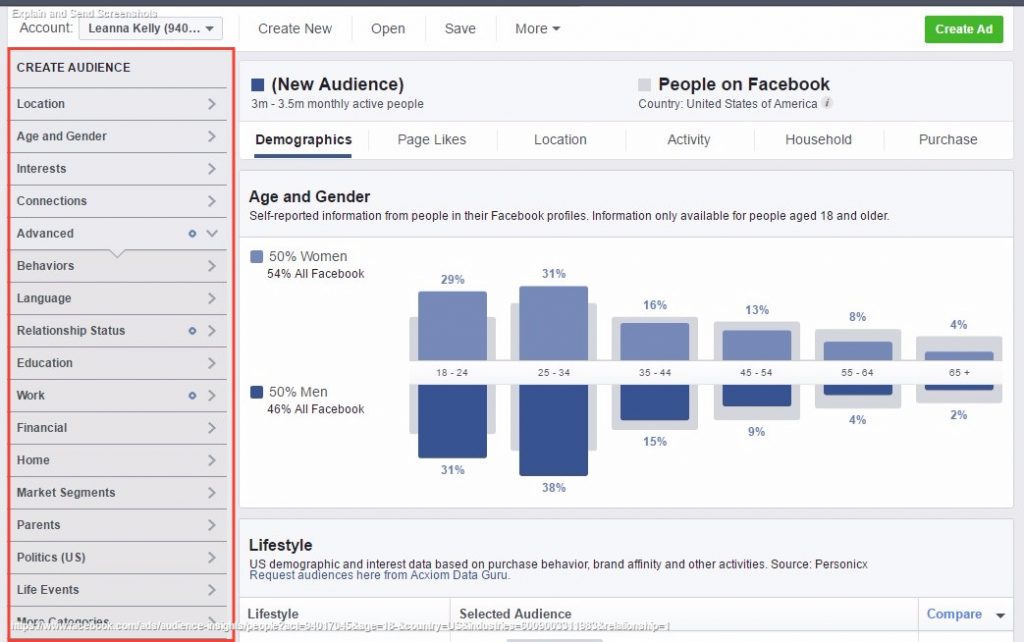
One piece of advice for advertisers looking to increase the amount of insights received from competitors: create a list of relevant competitor pages and groups on facebook. The Facebook Audience Insights tool will be able to look to your competitors to understand who you should also be targeting. Once you have a list, go to your interests located in the left-hand menu. Here you can try inputting these pages so that facebook can extract relevant audience metrics to apply to your campaign and potentially, to further increase return on your advertising spend. It’s important to note that not all pages will pop up, so it’s good to have a few pages/groups on the list.
Now that you have selected their location and what pages they follow, let’s get into the other 5 options the tool provides: demographics, page likes, activity, household, purchase.
If your monthly active audience is greater than 1,000 people, you will be able to see demographics related to gender, age group, education, work, language, relationship, job title, and more. This data is significant in content creation and helping you validate your buyer personas. As data is collected, you will be able to look into questions like:
Do the people in my audience lean towards one gender?
How should I be narrowing my targeting in regards to age and gender?
What are the industries worked in of people following my competitors page (by volume)?
Should my ads be targeted towards people with only high school diplomas or graduate degrees?
Should I target people who are single, in a relationship, engaged or married?
An advertiser can utilize pages likes data in two ways, as provided by Facebook. It can first answer the questions: What are the top categories of pages of interest for my target audience? What are the top pages of interest for my selected audience?
Pages likes data also highlights other useful insights for advertisers in it’s second section which focuses on: Which pages is your audience more likely to engage with than the average Facebook user?
The Activity tool presents two sections. One is the Frequency of Activities showing the user’s activities in the last 30 days. This will include average numbers of pages liked and the number of comments, likes, shares, and ad clicks within a period fo 30 days, also known as engagements. The second is the Device Users section where you can see a very specific breakdown of device type used to access facebook. Discover here if people in your audience are using mobile or desktop, if they are using iphone or android, or any other kind of device.
Why is the valuable insight towards your campaign? If the majority of your audience is on mobile and your site is not optimized for mobile, you are likely foregoing on a handful of conversions. Moz wrote an article on which users have the larger average order value (AOV). Data shows that Android users and Iphone users have different personas and spending habits as they are funneled into your campaigns.
An advertiser would focus their attention on household metrics if the purchase of their products are heavily influenced by another member of the household (e.g. car, school supplies, groceries). If you’re an advertiser looking to utilize Household metrics to optimize your ads and campaigns, there’s really two ways to approach them.
In the first option, if you decide to ‘Create a Custom Audience’ instead of directing your ad to “Everyone on Facebook”, you can subsequently select “Create a Household Audience.” The goal of the household audience tool is to help you deliver relevant ads to people (at least two family members) who live under the same roof. It’s important to note that Facebook focuses their attention on familial households because their joint financial obligations are more likely to influence advertising outcomes and campaigns.
If you have already selected “Everyone on Facebook” and you did not create a custom audience, here’s what you can expect to view/alter within the Household tab:
How do you know which option is best for you? Whereas in ‘Create a Custom Audience’ Facebook pulls data from your uploaded customer list, on ‘Everyone on Facebook’ Facebook is pulling data from your audience’s purchase activity, recent survey responses, and external third party services.
The Purchase tab collects four types of data from third parties:
Advertisers can use the column labeled “Compare” to measure which product categories their audience is more likely to purchase.
Once you’ve made your selections for your target audience, you can save your audience, then access them later by choosing “Open” on the main selection bar. Here, you’ll find all of your saved audiences:
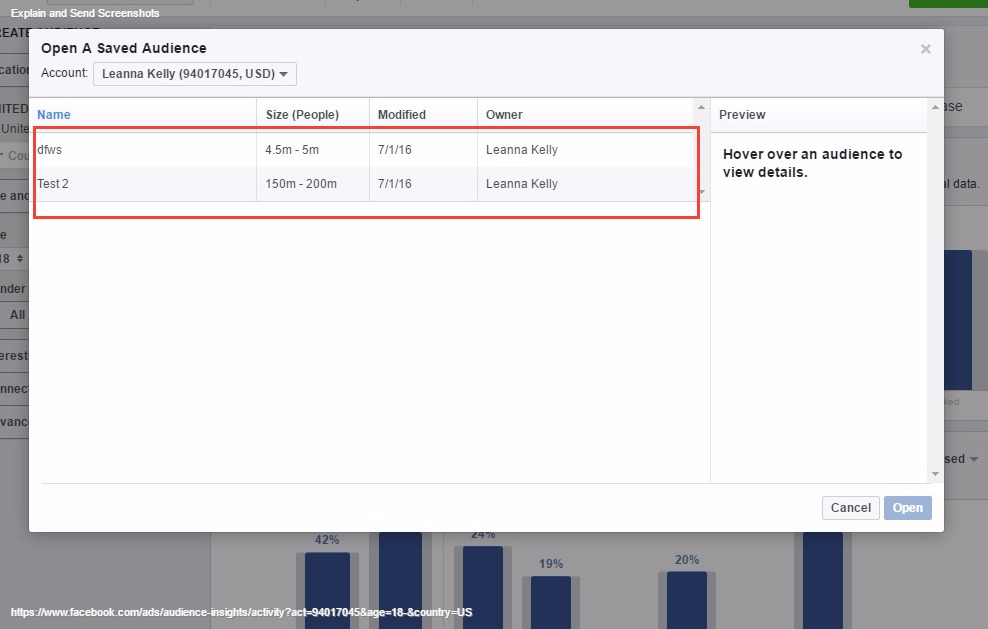
If you need to modify an audience, you can choose to replace that audience with the updated audience, or simply create a new one, which can be helpful for testing purposes.
Well, creating an audience is great, but what can you do with that? Test it! Select the green “Create Ad” button in the right top corner of the page, and you’ll see this menu come up:
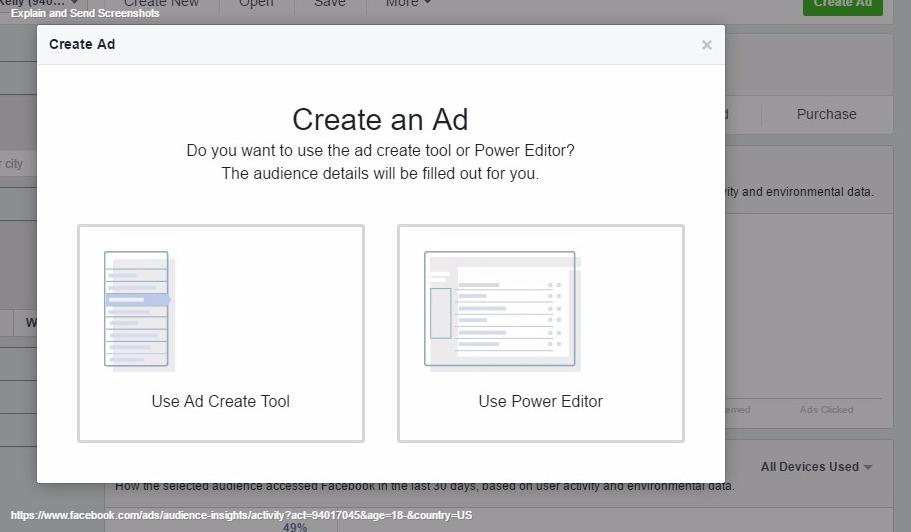
Notice you have option to create an ad geared toward your chosen audience directly in Power Editor. If you choose to work in the editor, you’ll be taken directly to this page:
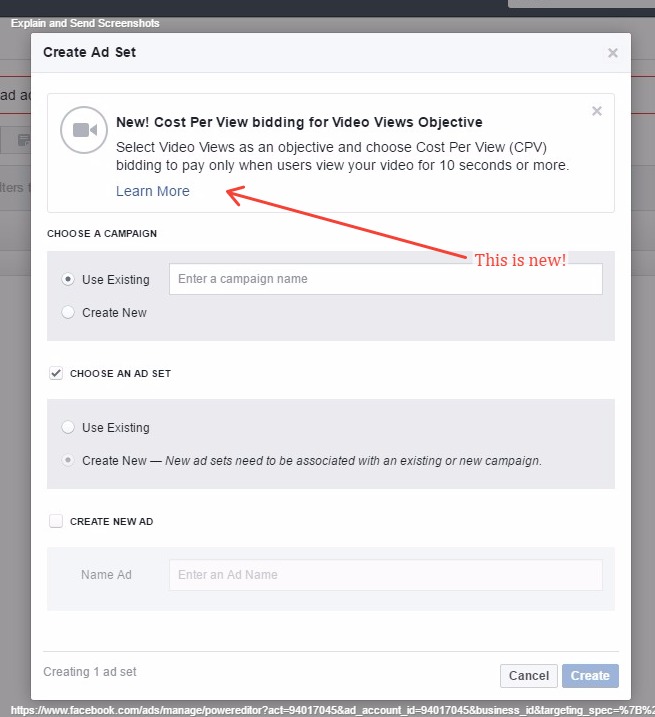
You can use your existing campaigns and ad sets, or you can start fresh with a new ad. As you might already know, Facebook automatically learns which ads work best for you. Analyze your successful ads and use these “lessons learned” to help you understand your audience and steer clear of bad conversion rates in future campaigns.
Facebook Audience Insights API Faded Away: In 2016, Facebook launched the Audience Insights API at Cannes Lions. The social media aggregators involved grab data from multiple social platforms plugged into the API. However, the offer never left beta testing and is now fading into the dark. In a recent statement Facebook said, “We have decided to focus marketers on our more broadly available Audience Insights tool, so we are winding down the Audience Insights API by end of year.” Takeaway? Keep your focus on other conversations around Facebook Audience Insights.
Facebook Looks at Increasing Monetization: According to Adweek, “Facebook CEO Mark Zuckerberg has communicated to investors that Facebook is close to hitting a tipping point with ad load, and that it soon won’t be able to pack more ads into news feeds.” This might be the foundational incentive behind facebook messenger ads and in the future, why we might see Facebook Audience Insights turn into a paid tool.
Have questions about how to use Facebook’s current Audience Insights? Email [email protected]
